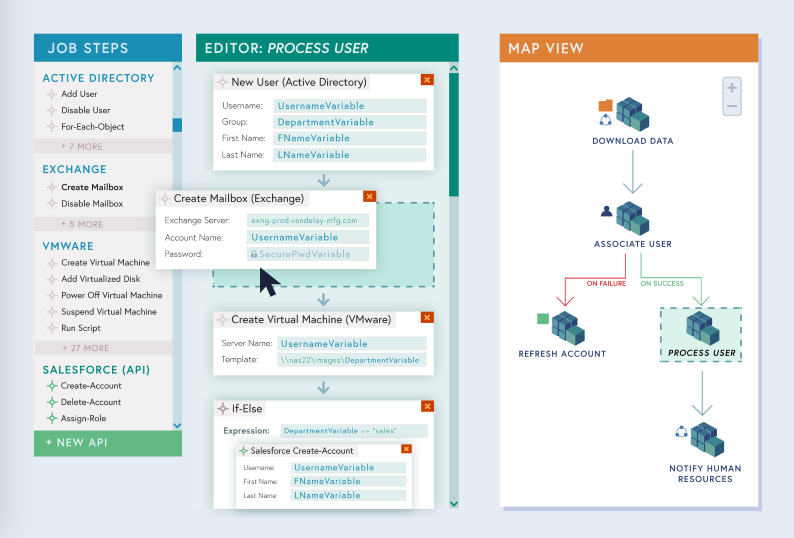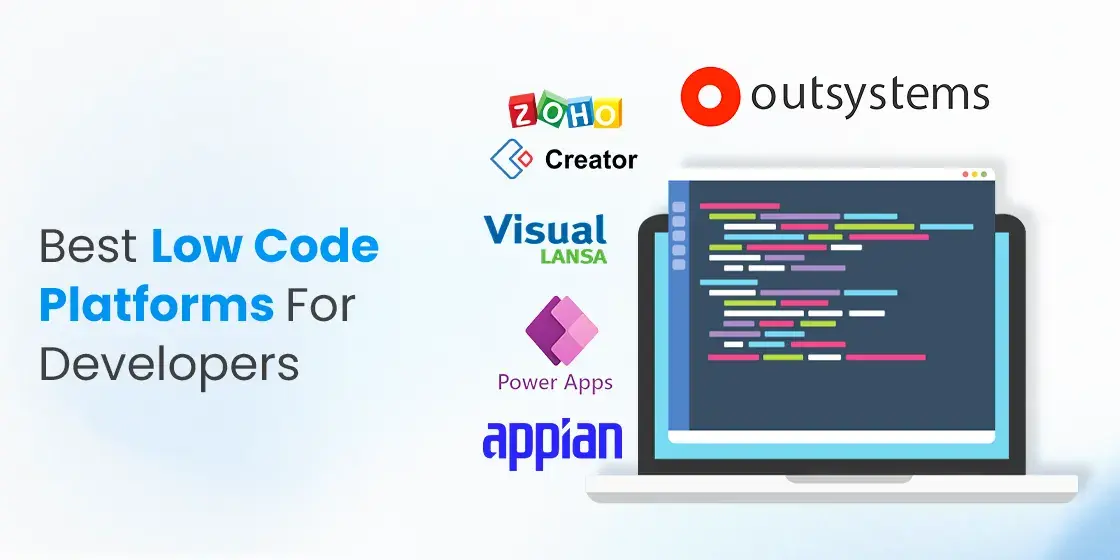Recommended Advice For Choosing Low-Code Platform Sites
Wiki Article
The Advantages Of Developing Low-Code To Speed Up Development
Visual Development Environment:
Drag-and-Drop Interfaces: Low-code platforms provide visual tools for designing applications. Drag-and-drop elements enable developers to rapidly build applications without the need to write extensive code.
Pre-built Components and Templates: Numerous platforms that can offer low-code support include templates and components pre-built that allow developers to build prototypes quickly and create applications without having to start completely from beginning from scratch.
Reduction of Coding Requirements
Automated Coding Generation: Low code platforms generate the code automatically in accordance with the visual model created by developers. This helps reduce manual code, and speeds the development process.
Reusable Components: Developers are able to reuse components across multiple projects, thus reducing the time they spend writing and testing code.
Collaboration is streamlined:
Low-code development platforms are usually equipped with tools, such as deployment, version control, and testing. This allows for seamless collaboration across teams.
Citizen Development Developers, business users and other stakeholders are able to help in the creation of applications through user interfaces that are intuitive. This helps to reduce the bottleneck created by the inaccessibility of professional developers.
Rapid prototyping and rapid iteration:
Fast prototyping: Developers can create prototypes quickly to test ideas and collect feedback. This can result in a shorter iteration cycle.
Easy Modifications - The visual nature of low-code applications allows easy updates and changes that speed the process of refining applications based on feedback from users.
Pre-built Integrations:
API Integrations: Low-code platforms typically come with pre-built connectors for popular services and APIs which reduce the time needed to connect external systems.
Data Integration: The tools that are built into the software simplify and speed up the process of linking databases, data sources and applications.
Scaling, deployment and deployment
One-Click deployment: A lot of platforms that make use of low-code have a one-click option for deploying applications, thus reducing the amount of time and effort.
Cloud-based solution: Cloud based low code platforms can handle the management of infrastructure and scale. This lets developers concentrate more on the applications' logic, functions and features rather than the logistics of deployment.
Low-code application development is a more efficient method to develop applications. It simplifies and automates various elements of the procedure. This allows for quicker delivery and adaptation to changing requirements. See the top rated Low-code Platform for application development hints for blog tips including low code development platforms, stored sql procedures, sso azure, sso azure, developing mobile apps, sso azure, software for app development, application modernisation, low code development platforms, app development platform and more.

Cost-Effectiveness Is One Of Many Benefits Of Creating Applications That Use Low-Code.
Low-code application development offers numerous advantages in terms of cost-effectiveness which makes it a desirable option for businesses looking to optimize their development budgets while still delivering top-quality software. Here are the top advantages: Lower development costs:
A lower code platform reduces the need for lengthy manual coding. This saves time and effort on the part of developers while developing applications. Also, it means less cost of labor.
Fewer Developers: Because low code development is speedier and simpler, there are fewer specialized developer resources required. This can significantly cut down on the cost of hiring and staffing.
Faster time to market
Accelerated Development Cycle Visual development tools and pre-built parts offered by low-code platforms allow for rapid application development, which allows businesses to bring products to market quicker. This will result in faster revenues and better position in the marketplace.
Rapid prototyping allows businesses to develop and test prototypes within a short period of period of time, which can reduce the time required for the development phase. This lets them make quicker prototypes after receiving feedback from users.
Lower Maintenance Costs
Due to their modularity and standard components, apps built on low-code platforms tend to be easier to maintain. This reduces the cost of maintenance and support.
Automated Updates. Many low-code platforms manage patches and updates automatically. Applications remain secure without needing extensive manual input.
Efficient Resource Utilization:
Contributions from non-developers Low-code platforms allow people who are not developers to be part of the process of development. This allows businesses and employees to work together, thus reducing the dependency on high-paid developers.
Optimized use of IT resources IT departments get the ability to focus on more strategic projects instead of being sucked into simple development tasks. Overall efficiency and productivity are improved.
Scalable Pricing Models
Subscription-Based Prices: Many lowcode platforms offer flexible, subscription-based price models that increase in line with usage. This allows businesses to be able to align their spending with the actual demands and growth while avoiding significant upfront costs.
Pay-Ass-You-Go Options: Certain platforms have pay-ass-you go options that guarantee companies only pay when they use resources. This is particularly useful for smaller and startup businesses with a limited budget.
Reduced costs of third-party software:
Built-in Functionalities : A low-code platforms often comes with built-in functionality and integrations, which eliminates the need for extra third-party software, tools and licenses.
Pre-Built Integrates: By integrating popular platforms and services You can save time and money, avoiding the requirement to create custom integrations.
Increased ROI
Faster ROI: Businesses can achieve a higher return on investment from their apps by combining speedy development, reduced costs and speedier time to market.
Improved Ability. Businesses will be able to adapt quickly to the ever-changing market conditions and customer requirements. This will help them remain relevant, and they are able to take advantage of new opportunities.
Reduced Training Costs
User-Friendly Interfaces: The nimble user-friendly interfaces offered by low-code platforms cut down on the learning curve of new users, and reduce the requirement for lengthy training programs.
Accessible Resources: Many platforms that make use of low-code have comprehensive educational materials, tutorials as well as community support. This reduces the need for formal education and expenses associated with it.
Collaboration Streamlined:
Improved Collaboration Tools: Built-in tools for collaboration help improve communication and coordination between team members, leading to improved development efficiency and less project overhead.
Unified Development Environment : A unified environment streamlines workflows and reduces the costs that are associated with managing different tools and platforms.
The overall cost-effectiveness of low-code development comes from its ability to reduce the cost of development and maintenance as well as speed up time to market, optimize the utilization of resources, and offer flexibility in pricing. All of these factors provide significant financial benefits for businesses, making low-code a compelling choice for businesses looking to increase their budgets for development and create solid, scalable high-quality and robust applications. See the most popular Enterprise application development with Low-code Platform hints for site advice including app modernization, application development platforms, cross platform mobile dev, push notifications, lowcode no code, no code platforms, sso azure, cross platform mobile development, build with docker, rapid action development and more.

Benefits Of Low-Code Application Development In Terms Of Customization And Constraints
The low-code method is an approach that is balanced and permits extensive customization, and also addresses the issues. These are the major advantages: Resolving limitations
Overcoming Complexity Barriers:
Simple Development : Low-code platform reduces complexity by providing components and templates that are pre-built, allowing to speed up creation and deployment.
Numerous platforms offer wizards and workflows with guided steps to help developers navigate complicated processes. These tools minimize the chances of errors, and also help to ensure consistency.
Scalability Solutions
Scalability Built-In: Lowcode platforms usually include capabilities to allow for the scalable architecture. They permit applications to cope with increasing demands without requiring major overhauls.
Performance Monitoring: tools for monitoring and optimizing performance are incorporated into the application to ensure that it is efficient, regardless of how it expands.
Security and Compliance
Low-code platforms are equipped with security functions like security access control that is based on roles encryption, as well as automated checks for conformity. These features address common concerns about security.
Platforms are constantly updating their security protocols to make sure that they comply with regulations. This helps keep the applications secure from threats that are constantly evolving.
Customization Capabilities:
Extensibility:
Custom Code Integration: Low-code platforms typically allow the integration of custom code (e.g., JavaScript, Python) that allows developers to enhance the functionality beyond the basic features.
Modifications and plugins that are custom Developers are able to create custom modules or plugins to provide specific features that are adapted to specific business needs.
APIs and integration:
API Support - Complete support of APIs facilitates seamless integration with other services and systems and allows for complete modification.
Third-Party Service: Low-code platforms offer pre-built connectors for well-known third-party service providers. This makes it easier to connect and modify applications.
Flexible UX/UI Designs:
Customizable User Interfaces: Designers may modify and create user interfaces that comply with the requirements for branding and usability and create a customized user experience.
Responsive Design Built-in features of responsive design guarantee that applications are able to be adapted to different screen sizes and devices.
Business Logic Customization:
Visual Workflow Designers: These graphic tools allow you to modify and create workflows, as well as business logic, allowing programmers to design complex processes that are tailored for their needs.
Platforms can provide conditional logic to meet certain business requirements or scenarios.
Data Management
Custom Data Models: Developers are able to create custom data models to meet specific requirements of an application to ensure that data processing is customized to the business needs.
Advanced Data Processing Integration and advanced data handling tools allow for customisation of data analysis and use within the application.
Customisation and balancing limits:
Frameworks, Standards and Standards:
Low-code platforms comply with industry standards and best practices. This allows for high-quality and secure applications.
Governance Frameworks - Built-in governance structures ensure that customisations do not affect security, integrity, or adherence.
Iterative Development and Feedback:
Rapid prototyping: By being in a position to quickly prototype and test modifications, developers are able to iterate on the feedback of users to improve the functionality of the application.
Continuous Improvement: Platforms with low-code enable continuous improvement, allowing customization and enhancement when the requirements of business change.
User Empowerment
Low-code platforms allow citizen developers to develop by allowing non-developers by using intuitive interfaces to modify applications, they expand the pool contributors that can enhance and tailor applications.
Support and Training: Many platforms provide extensive assistance and training to help users with making efficient customizations without compromising the stability of the application or performance.
Overall, low code application development provides a robust system to overcome issues and offer a wealth of options for customization. This allows companies to develop and maintain applications that are both functional and tailored to specific business needs. All while keeping high-quality, security scaleability, standards, and security.
